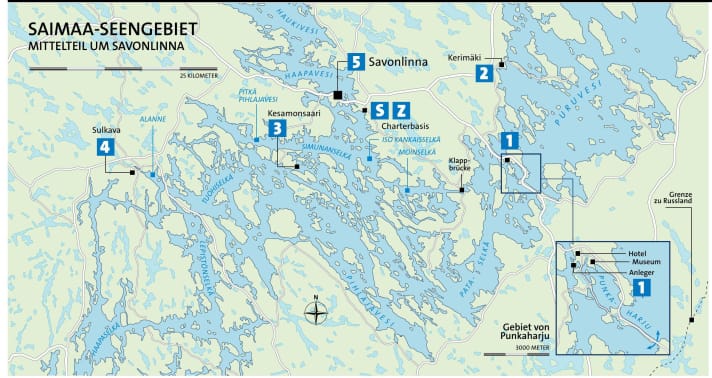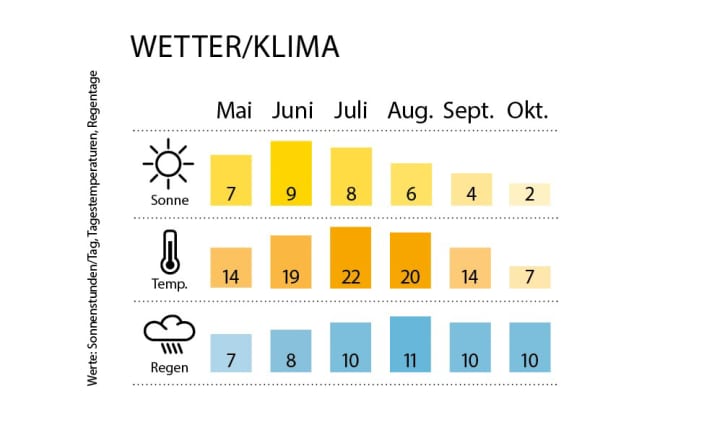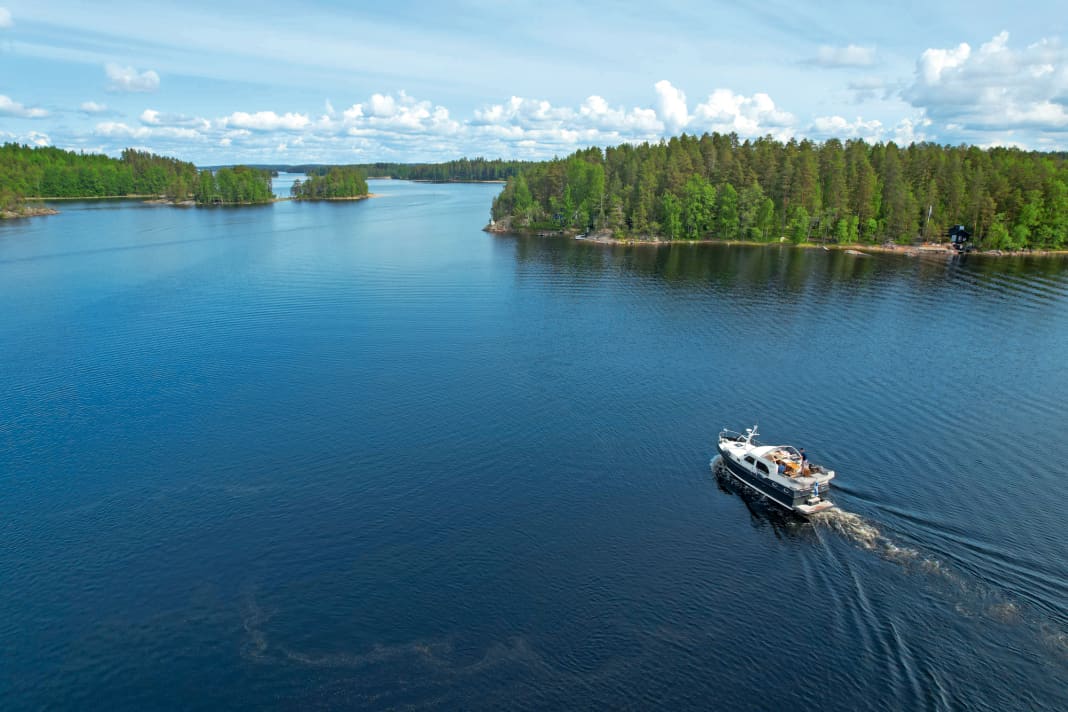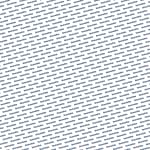In this article:
Finland is the happiest country in the world. At least that's what surveys such as the World Happiness Report repeatedly show. The Scandinavian country has topped the list for the fifth time in a row. Perhaps that makesmetsäthe difference: this is the Finnish word for forest. An important term. Because for the Finns, it counts for far more than the sum of its trees. The forest is an integral part of everyday life up here; it literally surrounds everything. So it's hardly surprising that one in five Finns owns a piece of it.
In fact, no other European country is more densely forested. Oaks, alders, pines and birches cover more than eight tenths of its surface area. Germany has just three tenths. This proximity led to a special understanding of the environment in Finland early on: One hundred years ago, when sustainability and nature conservation elsewhere only applied - if at all - within defined boundaries, the first general law to protect the forest was passed in Helsinki.Metsäis not only an important raw material and retreat. It is also a projection surface for the psyche, the living room of the people's soul.
There is no doubt about that once you have visited Lusto, the Finnish Forest Museum. The wordlustomeans annual ring. And like a tree trunk in cross-section, the modern exhibition complex, built largely of wood, tells the story of this special relationship between man and the environment, of the myths of the forest, life in it and its utilisation through the ages. This can be seen in the technology hall, for example, in the prototype of the Plusjack: This forestry machine, developed in Finland in the 1990s, can use its articulated arm to fell, limb and prepare selected trees for transport, even in dense forests. However, it does not run on wheels or chains, but on six legs like an insect - to minimise damage to the ground.
Saimaa - Europe's largest interconnected waterway network
But Finland is not only forest, it is also water. And nowhere in the country is the proportion of both as high as in the Savo region in the south of the country. This is because the Saimaa lake district, the largest contiguous network of waterways in Europe, stretches out here. Its total area corresponds to that of Bavaria. But even if you only add up the connected, navigable bodies of water, you still end up with 4,500 square kilometres. That's about nine times the size of Lake Constance. Endless expanses. We would like to explore at least a few corners of this huge natural stage on our charter cruise over the next few days to get closer to this Finnish lifestyle. A slice of happiness wouldn't be bad! And the insights that Lusto gave us right at the end of our first day of sailing seem to be just the right start.
Our adventure on the Saimaa begins in the morning at the Saimaa Vuokravenho charter base in Savonlinna. Company boss Harri had already welcomed us yesterday and, after handing over our dark grey Linssen Grand Sturdy 30.9 AC, gave us some tips for the trip. As it is supposed to be raining constantly in the north and south, he suggested that we head east first. What luck that this huge area offers so many possibilities!
The Punkaharju ridge
Our first destination for the day is Punkaharju. Over several kilometres, this narrow ridge connects a number of islands like an artificial dam. Ice age meltwater streams have created this unique formation, which has attracted travellers and artists since early times. Savonlinna itself, on the other hand, should only be at the very end of our cruise. So we leave the city behind as we head south for a while. We cross the Iso Kankaisselkä before the course takes us eastwards. We are travelling alone and follow a chain of narrow lakes whose names end in -vesi, -selkä or -järvi. We drive like this for more than an hour. Sometimes the wooded rocky shores move closer, sometimes further away. We follow the changing fairway lines, which are always marked with directional beacons one behind the other. Their bright yellow colours are easy to spot from afar.
At the end of the long stretch of water at Moinselkä, we come across the only obstacle on our trip: the bascule bridge over the Virtasalmi. To our surprise, we don't even have to register, because we can pass through without the canopy and with the mast down, as the closed height of 2.50 metres is enough for our Linssen. Now the Jännevesi and a hook on the Haatanselkä, then we reach the island world of Punkaharju. As expected, the floating dock we are aiming for (called Vesijohto in the harbour guide) is empty, so we can relax and go alongside. It is the middle of June. It only gets crowded here at the start of the short main season on the Saimaa, so we have to tie up with the stern to one of the orange mooring buoys.
We walk through the pine forest to the nearby Hotelli Punkaharju to register. We pay twenty euros, but also learn that the sauna by the lake is only open in the morning. We want to be on the road again by then. The historic wooden building, built in 1845 for Tsar Nicholas I as a hunting lodge, is the oldest hotel in the country and is said to offer excellent cuisine. But we already have other culinary plans for this evening: after our visit to the forestry museum, which is only 1.5 kilometres from the jetty, we light the first disposable barbecue on the deserted jetty of the S/S "Punkaharju". There aren't many mosquitoes to be seen, but we prefer to change into long trousers for our burger session. Around half past ten, the Saimaa sun disappears unobserved behind clouds on the horizon. A little later, however, its reflection creates a red spectacle in the sky. Nature cinema with box seats.
Lake Puruvesi
The next day, we follow the course of the Punkaharju to the south-east until we reach a narrow passage spanned by two high bridges. The Puruvesi begins behind it. It is one of the largest lakes in the region and is only slightly smaller than Saimaa itself, which gave the whole area its name. Unlike yesterday, we only need one real change of course over the next twenty kilometres on the wide expanse of water, which now lies before us like a mirror in the morning sun. Then we have reached our destination: Kerimäki harbour on the western shore of the lake. Once again we are alone and can moor alongside at the guest jetty. The harbour is flanked by a row of red boathouses, behind which there is a small, reed-lined beach.
Kerimäki's main attraction, however, is located a little further inland, four hundred metres up the Kirkkontie: it is the largest wooden church in the world, in the middle of the Finnish hinterland. It looks mighty from the outside with its cruciform floor plan and free-standing bell tower, but inside there is room for five thousand worshippers under the massive beams. And this despite the fact that the settlement only had a few hundred souls at the time of its completion in 1847. Even today, it would only just be filled. The fact that the wrong unit of measurement was used during construction - the Russian cubit instead of the intended American foot, which was only half as long (the pious founder of the sacred building was a Finn who had made his fortune in the New World) - is just a legend, however. They really wanted to build big, too big, as it turned out: the church has to remain closed in winter - the hall-like interior simply cannot be heated. After our visit, we are also happy to see the sun again.
On the terrace of the Kaivopirtti café-restaurant right next door, we find a free table with an unobstructed view of the church. Over coffee and wild berry tart, it's great to philosophise about the sense and nonsense of worldly splendour...
The town of Sulkava
We are woken by the loud pattering on deck: The rain has caught up with us. So we will head west to Sulkava. It's supposed to get better there the day after tomorrow. But none of this makes any difference today. For tonight we have chosen another natural harbour halfway along the route, which is supposed to be very beautiful. Our route first takes us back towards the bridge, over grey water and between dark banks that have been drained of almost all their colour.
It starts to pour down heavily, but the windscreen wipers do their best. On the Iso Kankaisselkä, we turn west under a steely sky and soon find ourselves in a labyrinth of larger and smaller islands, connected by mostly narrow but buoyed fairways. We reach a bay shielded by skerries in the south-east of the island of Kesamonsaari. The harbour guide calls this place Satamoniemi. We moor up and set off to explore the dense, dripping forest as the rain subsides.
The natural harbour seems well equipped, with a rustic "pavilion" and fire pit, plus saws, hatchets, even pans and barbecue utensils. A freshly carved wish can be read on a supporting beam: "Peace for Ukraine". Through the trees, in the twilight, we come to a clearing with two houses made of greyed wood. Ferns grow in front of the doors and the threadbare, closed curtains look as if they haven't been moved for a long time. A little eerie... Fortunately, it's soon time to fire up the barbecue again. The steaks from the supermarket are great. They are accompanied by salad, slightly blackened toasted bread and cold tinned Karjala. The embers stay warm for a long time.
Chainsaws in the morning. When we wake up at nine o'clock, a large group has already taken over the barbecue hut - apparently for a particularly Finnish form of early family outing. Plenty of wood has already been prepared for the picnic and the fire is blazing brightly. We set off in the direction of Sulkava. When we reach the large Tuohiselkä just under an hour later, the short wave and the whistling through all the cracks make it anything but cosy. Even with long underwear, which we had wisely brought with us. But after we pass the new bridge over the Vekaransalmi, the water is calmer again and we can even have breakfast. Even if the butter is not warmed by the sun as on the first day, but by the heating.
Lake Alanne
In the early afternoon, the Alanne opens up before us, a particularly picturesque lake with gentle shores lined with wooden holiday homes in Finlandmökkicalled. Children play on the jetties while their fathers load up their aluminium fishing boats for the evening fishing trip. Our destination for the day, Sulkava, lies at the end of the lake. After a four-hour journey, we pull up alongside the outermost guest jetty and check into the bright and welcoming Hotelli. It costs 25 euros a night, sauna included! But before that, there's still time for a walk through Sulkava, which looks wonderfully sleepy. We stroll along the canal that leads to the next lake, marvel at the old wooden houses with their protruding carved gables and after five minutes we reach the central square with the bus station, supermarket and community centre.
In the nice little pizzeria Pijot, Google Translate helps us once again with the menu: owl, old man and reindeer? Breathe a sigh of relief: only the last option is actually topped with the ingredient mentioned. Then the sauna we've been waiting for finally arrives. "If you want, you can stay in all night," says the landlord. "There are no more reservations today." He has preheated the sauna well and there is plenty of wood. It's grey and wet outside, but inside it's sweating from the inside. This day couldn't end any better.
The return journey to Savonlinna holds no more big surprises. The weather has calmed down and the sun is even sending a few rays through the clouds again. The navigation is now familiar, with the plotter and autopilot doing their bit. When we dock in the guest harbour of Savonlinna after a five-hour journey, one of which took us across the long Pitkä Pihjalavesi in a dead straight wake, we feel like we're in a big city. A nine-storey tower block right on the shore - something we've never seen before on this trip. But the forest doesn't let go of us that quickly. And we even feel a little happier.
Cruising stages

SSavonlinna (charter base) - Punkaharju: 30 km
- Punkaharju - Kerimäki: 29 km
- Kerimäki - Kesamonsaari: 70 km
- Kesamonsaari - Sulkava: 32 km
- Sulkava - Savonlinna (guest harbour): 46 km
- Savonlinna (guest harbour) - Savonlinna (charter base): 4 km
Z Savonlinna (charter base)
Total distance: 211 km
The TOP 3 in the district
1 PunkaharjuThe unique nature of the glacial landscape and the Lusto Forest Museum make for a mix that is not to be missed( www.lusto.fi/de ).
2 Savonlinnais the heart of the Saimaa region. Not only because of the opera festival (1 July to 30 July 2023), but because of the tourist offer in general( www.savonlinna.fi/de ).
3 KerimäkiThe largest wooden church in the world has its own special atmosphere. From the tranquillity, you can then head to the sun terrace of the Kaivopirtti restaurant next door.
Nautical information
The Saimaa areais often referred to as a single lake. The lake district stretches around 350 kilometres from Nurmes in the north to Lappeenranta in the south. With an area of 70,000 square kilometres, it is about twice the size of the German state of Bavaria. This makes Lake Saimaa "only" the fourth largest lake in Europe, but due to the length of the Lakeland coastline, the large islands and the numerous fairways, it is the continent's most extensive inland area. Navigation therefore requires great thoroughness, especially when no electronic aids are available to determine the current position. Landmarks and locations are rare, and the coastline and waters are similar throughout. However, the equipment with navigational aids (leading and leading lights, leading beacons, lateral and cardinal buoys with floating poles) is very good and complete throughout. A total of 3000 kilometres of buoyed shipping lanes have been designated.
Weather and climate in Finland

Charter
We undertook our week-long cruise with the largest provider in the area, Saimaacharter Voukravenho. The base is the centrally located city of Savonlinna, which was also our starting and finishing point. The charter company is a partner of the network of Linssen Boating Holidays. Information: Saimaacharter Vuokravenho, Kiurunkatu 15, 57230 Savonlinna, Finland, Tel. +358-400 79 69 49. www.saimaacharter.com
Our boat
Linssen GS 30.9 AC (steel displacement) - Length: 9.75 m - Width: 3.35 m - Draught: 1.00 m - Engine: diesel (55 hp) - Berths: 4 (2 double cabins) + 2 (saloon) - WC/shower: 2/2 - Equipment: bow and stern thruster, autopilot, plotter, electric windlass, etc. Weekly rates: from € 1750 to € 3090 depending on the season.







